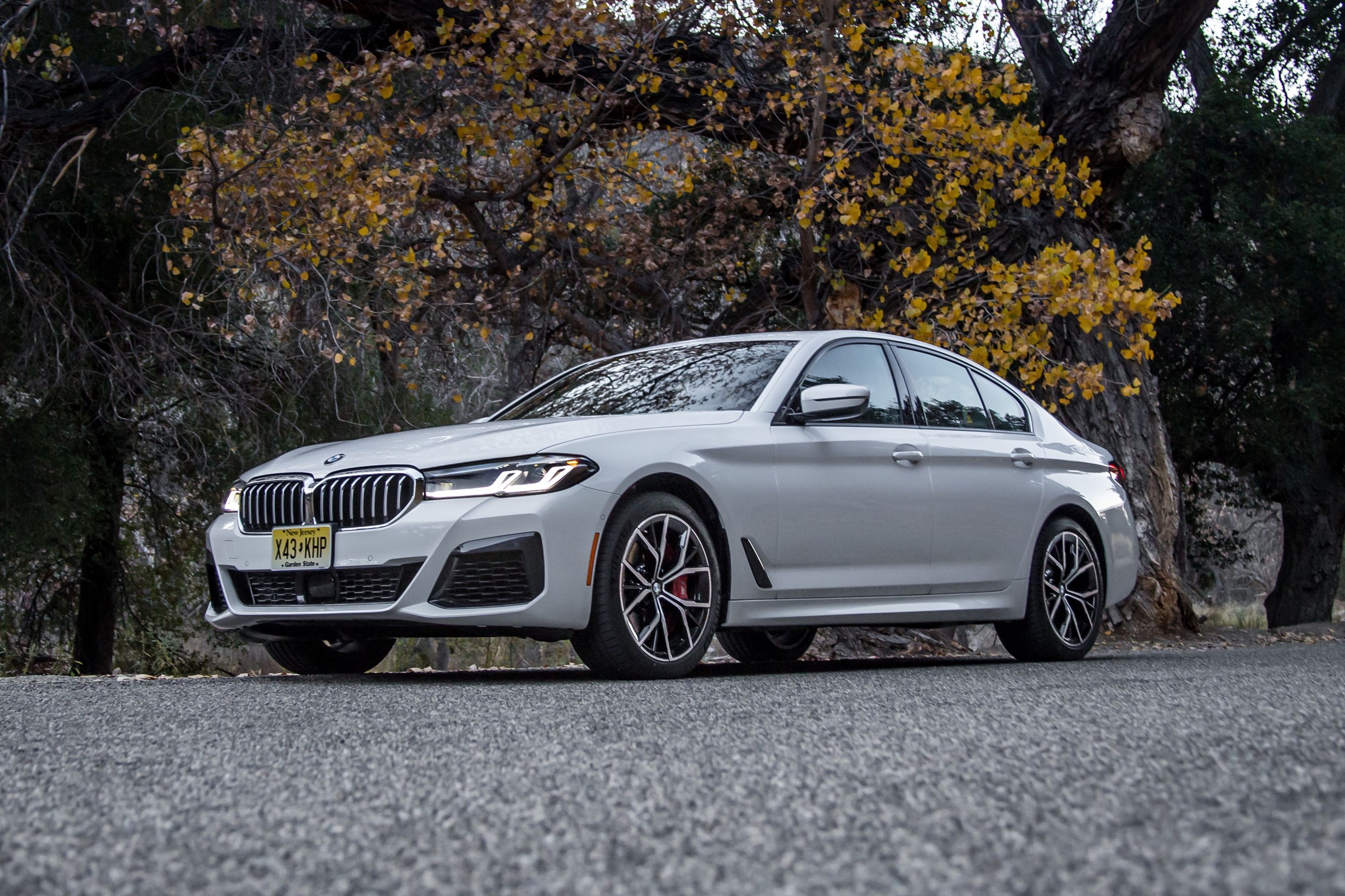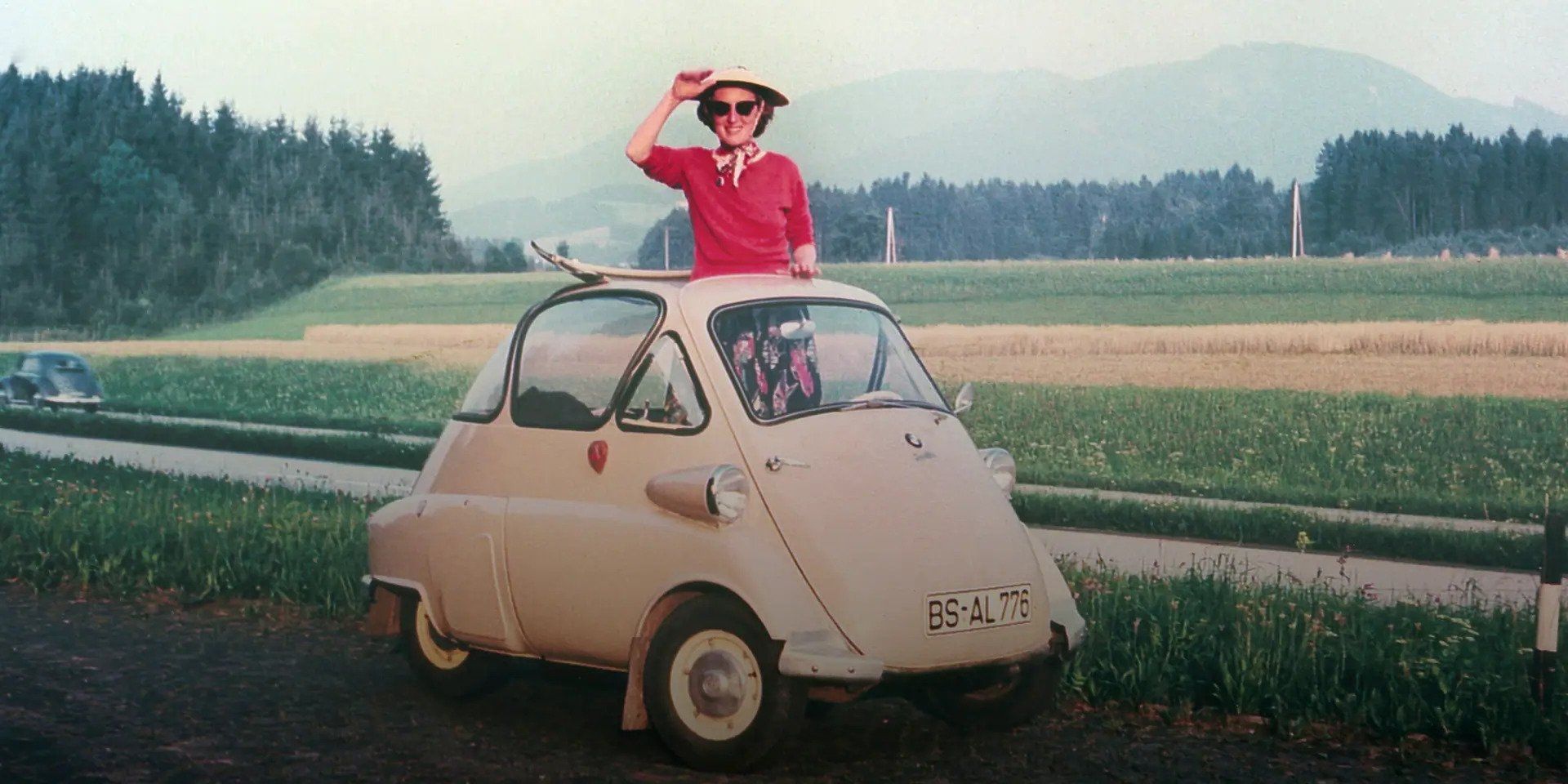
During a recent roundtable with Domagoj Dukec, Head of BMW Design, at the Concorso d'Eleganza Villa d'Este, CarBuzz learned that the just-revealed 5 Series and its first-ever all-electric alternative, the i5, both drew on BMW's Italian design heritage for inspiration.
The i5 was especially tricky to style with grace, as the all-electric platform makes the sedan roughly two inches taller than a G20 3 Series. Dukec says that this made it "a big challenge" to come up with something elegant.
"But I think we achieved [what we aimed for], that the car looks almost more Italian than the BMWs before," said Dukec. "This [Italian styling] fits because we have so much history with Italian designers having an impact on Neue Klasse, and of course, with the 5 Series, there were always Italians involved."
The 5 Series, and BMW as a brand, are hardly the first cars you think of when you think of Italian automotive design. So we investigated Dukec's remarks and found an astounding history of Italian flair in BMW products.
Renzo Rivolta - Father Of BMW's Microcar
Renzo Rivolta was an Italian engineer with a passion for racing, be it on water or land, with two wheels or four. He had several ventures, but in 1950, he designed and patented the Iso Autoveicoli Isetta, which went into production in 1953. At the time, BMW was looking for a small car design that could use its motorcycle engines, and it eventually decided to buy the design from Rivolta, and from April 1955, the first BMW-branded Isettas began to roll out of the factory.
Technically, this means Rivolta never worked directly for BMW, but this still counts as an Italian design on a Bimmer.
Giovanni Michelotti... With Scaglietti and Vignale
As Dukec said, Italian design influenced BMW vehicles considerably. Most prominent in this era was arguably Giovanni Michelotti, whose penmanship resulted in the 1959 BMW 700.
No single designer is credited with the Neue Klasse vehicles' designs, but Michelotti was a notable member of the team.
In 1959, one of his most famous creations was revealed as the 3200 Michelotti Vignale, a car with input from Michelotti, Scaglietti, and Vignale. Michelotti came up with the design, Sergio Scaglietti's company produced the body, and carrozzeria (coachbuilder) Vignale assembled the car. Based on the exquisite BMW 507, the one-off was always destined for greatness. Italian flair only enhanced its appeal.
The Bertone Factor
Born Giuseppe Bertone, Nuccio Bertone turned the company his father founded into a world-renowned powerhouse of design, and the first car he worked on for BMW was the 3200 CS. This took some ideas from Bertone's earlier Alfa Romeo Giulietta Sprint from 1954, but it also introduced some totally new concepts, like the Hofmeister kink. Wilhelm Hofmeister was BMW's chief designer at the time. Other iconic design elements incorporated included the small kidney grilles in the center, a BMW emblem on the C-pillar, and the decision to avoid chrome striping along the profile.
Giorgetto Giugiaro is often credited with the design of the 3200 CS, but while he worked on the car as a Bertone employee, it's the company founder's son who should get most of the credit.
Gruppo Bertone was also responsible for the 1969 2800 Spicup concept, a wild and wacky one-off that never reached production. Its name came from the fact that it could act as a spider and a coupe. This is just one of several one-offs spawned by a BMW collaboration with an Italian designer.
We have two more Bertone BMWs to talk about, but we'll consider those separately, as the man who sketched them is famous in his own right. First, let's see what another Italian did for BMW.
Pietro Frua - Penning BMW's Muscle Car Concept
In 1968, the world was introduced to the BMW 2000ti Coupe concept, which certainly looked more Italian than German. Its stylist was Pietro Frua, whose Glas car company BMW had absorbed two years prior. Some credit Frua with the design of the iconic Vespa while he worked at Farina, the company at which he met Giovanni Michelotti. He did work for Fiat, Maserati, Renault, and of course, BMW. Here, he sketched the 1969 2800 GTS concept based on the 2800 CS. He's also credited with the BMW 1600 GL, the 1600 GT Coupe and Cabriolet, and the super-rare BMW-Glas 3000 V8.
BMW wanted patents that Glas owned. Without them, Munich may never have heard of Frua, and we're glad history turned out the way it did.
Marcello Gandini - Father Of The Sharknose
Italian design has been responsible for some of the most attractive and timeless Bimmers ever made, but we'd argue that Marcello Gandini's contribution to Bavarian automotive design is especially noteworthy. He's the man who created the spectacular BMW Garmisch concept in 1970 and then the E12 5 Series in 1972. Both vehicles were penned when Gandini worked for Bertone, and their shark-nose front-end design has characterized several stunning BMWs since.
"Marcello Gandini, to me, is one of the grandmasters of car design, and his cars always have been an important source of inspiration for my work," said current BMW Group Design Head Adrian van Hooydonk. We wish he'd look at Gandini's designs more closely, but the latest 5 Series is not a bad effort either.
Giorgetto Giugiaro - The Legend Of The M1
Anyone who looks upon the 1978 BMW M1 in the metal can clearly see that the styling is more Italian than German, and that's because the legendary Giorgetto Giugiaro sculpted it. Born of a failed partnership with Lamborghini, the M1 was BMW's first supercar, and with such dramatic looks, Giugiaro decided to put a BMW emblem on each side of the rear end so that motorists who were overtaken by the car would not mistake it for something from the Mediterranean country of pizza and pasta.
As a side note, the tubular steel spaceframe chassis was also Italian, courtesy of Gianpaolo Dallara.
Giugiaro did such a good job of the styling that not even the infamous Chris Bangle could ruin it with his modern interpretation, the M1 Hommage. This concept arrived in 2008 and had us aching for a contemporary successor. Those feelings still persist.
Ercole Spada's Timeless Elegance
Young but brilliant, Ercole Spada was snapped up by Zagato at the tender age of just 23. Before long, he was entrusted with a unique reimagining of the Aston Martin DB4 GT, and his resulting creation cemented his status as an artist who could turn the wonderful into the extraordinary. He was also responsible for the Alfa Romeo Junior Z and the Lancia Fulvia Sport. He joined Ford in 1970 as chief designer at Ghia, which led to the ill-fated GT70.
A short stint at Audi was followed by employment at BMW in 1976 as its chief stylist. Working with Claus Luthe, Spada styled the 1987 E32 7 Series and the 1987 E34 5 Series, both of which contributed to BMW's success in the period and have subsequently stood the test of time.
Notable Mentions
In 1991, the BMW Nazca C2 Coupe concept was presented as a potential M1 successor. Not long after, a Spider version was displayed at the 1993 Monaco Grand Prix. Both were styled by Italdesign while Giorgetto Giugiaro was at the company, but the design was actually based on the Bugatti ID 90 concept revealed in 1990. Further design inspiration came from the Nazca M12, which was the first car penned by Giorgetto's son, Fabrizio. Despite its drop-dead gorgeous looks, BMW was scared off by the relative failure of the original M1, which after the whole Lamborghini fiasco, was wildly expensive and somewhat late to the party. Fortunately, three Coupes were made for private customers.
In 2003, the BMW 5 Series arrived in E60 sedan and E61 wagon forms. The lead designer was Austrian Boyke Boyer, but the final design, supervised by Chris Bangle, was developed by Italian Davide Arcangeli.
In 2012, we saw the BMW Zagato Coupe and Roadster (the latter of which took just six weeks to progress from design idea to finished one-off), while 2013 saw the arrival of the Pininfarina-designed Gran Lusso Coupe.
If this list is anything to go by, Italian style with German precision is always a winning recipe.

